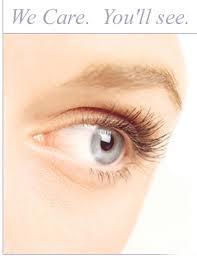
lthough the negative health effects of cigarette smoking cannot be debated, it remains the single most common cause of preventable deaths. Each year, over 430,000 people die as a result of a smoking related disease. Yet, over 50 million continue to smoke, including over 3 million teens. An estimated three thousand teenagers begin to smoke each day, and one thousand of them will eventually die as a result. According to the American Lung Association, cigarette smoking leads to 87% of lung cancers, emphysema and chronic bronchitis. Healthcare and lost productivity costs of $97.2 billion dollars per years arise from smoking related illnesses. Cigarettes contain over 19 known cancer-causing chemicals in addition to nicotine.
Quitting is a frustrating and difficult proposition for these people who despite the knowledge that they are seriously harming their bodies. Addiction to nicotine causes very uncomfortable symptoms of with drawl. Irritation, agitation and anxiety as well as loss of concentration, sleep disturbances, headaches, coughing and cravings.
Smoking cigarettes is so compelling because of the effects of nicotine. A stimulant, nicotine causes a temporary increase in alertness and a calm feeling. And it can be incredibly addictive. Some studies have found nicotine to be more highly addictive that cocaine or heroin. Additionally, it suppresses the appetite and smokers tend to keep weight off.
How Smoking Harms Your Body
Here’s why cigarette smoke causes so much damage to our bodies. While nicotine itself isn't thought to be carcinogenic, the highly addictive drug is toxic and potentially lethal in large doses. Long-term smokers have a much higher risk of developing a host of life threatening diseases. Just about any cancer you can think of, including cancer of the lung, mouth, nose, voice box, lip, tongue, nasal sinus, esophagus, throat, pancreas, bone marrow, kidney, cervix, liver, bladder and stomach can result from smoking.Heart and lungs are most damaged by smoking
Lung diseases such as chronic obstructive pulmonary disease, which includes chronic bronchitis and emphysema, are largely due to smoking. Heart disease, which includes coronary artery disease, heart attack and stroke are far more common in smokers. One of the effects of nicotine is constricting the blood vessels, which in turn causes high blood pressure. Another effect is raising your heart rate, which adds extra stress on your heart.Not only does smoking affect the heart, but every part of your circulatory system. Your blood becomes thicker and stickier, further taxing the heart. The lining of the blood vessels is damaged, allowing fat deposits to adhere, and is most likely a significant cause of arteriosclerosis, or hardening of the arteries.
As a result, diminished circulation to the feet and hands leads to painful neuropathy, and impaired ability to fight local infections. This can lead to gangrene and sometimes requires amputation.
Inhaled smoke contains poison
The inhaled smoke contains many harmful substances, such as tar, carbon monoxide, hydrogen cyanide, heavy metals and free radicals. Each of these damages the body in various ways. Tar is sticky and brown, containing many chemicals known to be carcinogenic, including benzopyrene. It also and stains teeth, fingernails and lung tissue. It causes damage to the mouth, teeth and gums, as well as ulcers of the digestive system.
Osteoporosis is caused by a leeching of calcium from the bones and predisposes smokers to fractures. The hip joint is particularly vulnerable to fractures and Avascular Necrosis, a disorder where the bone dies.
Because carbon monoxide, a major component of the smoke, binds with higher affinity to hemoglobin, it displaces oxygen carried by the blood. Since less oxygen is carried within each blood cell, the heart must pump more blood through the body to transfer the same amount of oxygen to the cells.
Hydrogen cyanide prevents the lungs from cleaning themselves of poisonous chemicals. Cilia, the tiny hairs that help to clean the lungs by moving foreign substances out are damaged. Harmful chemicals are allowed to collect in the lungs, preventing oxygenation of the blood.
Other chemicals in smoke that damage the lungs include hydrocarbons, nitrous oxides, organic acids, phenols and oxidizing agents. Free radicals are highly reactive chemicals that can damage the heart muscles and blood vessels When they react with cholesterol plaques are formed, which increase the risk of arterial damage, heart disease and stroke. Finally, tobacco smoke contains dangerous metals including arsenic, cadmium, and lead. Many of these are known to cause cancer.
The tars in smoke can trigger cancer of the esophagus and throat. Smoking causes increased stomach acid secretion, leading to heartburn and ulcers. Smokers have higher rates of deadly pancreatic cancer. Many of the carcinogens from cigarettes are excreted in the urine where their presence can cause bladder cancer, which is often fatal. High blood pressure from smoking can damage the kidneys.
Smoking Damages Other Systems
Smoking adversely affects the reproductive system, especially in women. Many female smokers experience irregular or absent periods. Fertility is compromised, and menopause occurs one to two years earlier. The risk of cervical cancer is increased. For women over 35 taking oral contraceptives, there is a significantly increased risk of stroke or heart attack if they are smokers. Men, experience lower sperm count, more abnormal sperm with decreased motility. There is also an effect on the man’s level of sex hormones. Decrease circulations also predisposes male smokers to impotence as a result of overall compromised circulation and damage to the blood vessels in the penis. .Smoker’s immune systems are impaired, leaving the smoker vulnerable to a host of minor infections. A smoker needs more time to recover from infections than a non-smoker. Coupled with diminished circulation, a smoker’s risk of infection from minor cuts or abrasions to the arms or legs skyrockets.
Cigarette smoking decreases bone density, promoting osteoporosis. Skin becomes dry and loses it’s elasticity as a result of poor circulation. Premature wrinkling is common. Irritation and inflammation of the stomach and intestines is frequently seen, including painful ulceration of the entire GI tract.
Even more serious are the risks to an unborn child if the mother smokes. Miscarriage is more common in women who smoke. Infants of smoking mothers are at increased risk of low birth weight, prematurity, cleft lip and palate, infections and SIDS.





